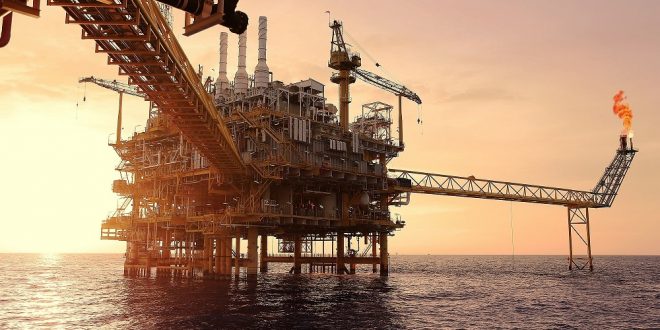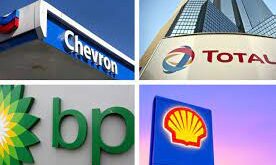Global oil demand may have already peaked, according to BP’s latest long-term energy outlook, as the COVID-19 pandemic kicks the world economy onto a weaker growth trajectory and accelerates the shift to cleaner fuels.
Demand for oil will be the biggest casualty over lower energy demand in the coming three decades as weaker economic growth and a faster shift to renewable energy accelerate the demise of oil-based transport fuels, BP said its Energy Outlook 2020 published Sept. 14.
Global demand for liquid fuels, including oil and biofuels, will almost halve to less than 55 million b/d by 2050, when oil’s share of the global energy mix will slip to just 14% from around a third currently, according to BP’s new central “Rapid” energy transition scenario.
Even under a more conservative “Business as Usual” scenario, BP now sees global oil demand peaking within a few years at just over the 100 million b/d level seen in 2019.
“There is a risk that the economic losses from COVID-19 may be significantly bigger, especially if there are further waves of infection,” BP said.
Under its central scenario, BP sees oil demand around 3 million b/d lower in 2025 and 2 million b/d lower in 2050 as a result of the pandemic. About two-thirds of the impact reflects a weaker global economy, with the remaining third a result of lasting behavioral changes due to COVID-19, BP said.
These “scarring effects” from the crisis will see absolute demand for fossil fuels fall in all future scenarios, BP’s chief economist Spencer Dale said, marking an “unprecedented” historical decline for any class of fuel in the world’s energy mix.
Oil in transport alone will peak in the mid- to late 2020s in all scenarios, Dale said, driven by progress on efficiency and electrification.
RENEWABLES BOOM, IMPACT ON GAS
Less global air travel and more home-based work could be a lasting legacy of the pandemic, while policy pressure could accelerate the uptake of electric cars, boost recycling and reduce the use of single-use plastics, he said.
“The diminished role for oil reflects the proportionally higher impact of COVID-19 on the transport sector, faster penetration of electricity and hydrogen in transport, and more stringent policy assumptions regarding the use of plastics,” BP said in the report.
By 2050, both bioenergy such as biofuels and hydrogen will account for around 7% of primary energy consumption, BP’s central scenario predicts, and the share of oil in transport slumps to 40% from 90% in 2018.
“…In all our scenarios, the share of renewables energy grows more quickly than any fuel in history,” Dale said.
Renewables are set to see their share of the global energy mix jump from 5% in 2018 to 45% in the “Rapid” scenario, led by a jump in wind and solar capacity. Electricity in the energy mix increases from a little over 20% in 2018 to 45%, with 350 GW of new wind and solar growth alone by 2035.
With clean, renewable energy surging, BP sees the role of natural gas lower than in last year’s report, squeezed by a more pronounced shift to renewable energy in power generation and a greater substitution by electricity and hydrogen. Gas demand now peaks in the mid-2030s at 26% of the energy mix in the “Rapid” scenario before slipping to 21% by 2050.
NEW DIRECTION
BP makes the shift to its new central scenario to “Rapid” after its new CEO Bernard Looney set out ambitious plans for the oil major’s pivot to cleaner energy in February. Europe’s number two oil company wants to shrink its oil and gas production by at least 1 million b/d of oil equivalent, or 40%, over the next decade, in a radical transformation.
Under BP’s base-case “Evolving Transition” scenario last year, the company saw global liquids demand holding steady at 108 million b/d to 2040, after peaking in 2035.
BP’s more pessimistic outlook for oil demand contrasts with the International Energy Agency, which in November predicted oil demand growth would be flattening out by 2030 to reach 106.4 million b/d in 2040.
Speaking in July, the head of the IEA, Fatih Birol, said he “would not be surprised” if global oil demand recovers to over 100 million b/d after the pandemic is brought under control.
S&P Global Platts Analytics sees global oil demand peaking in 2040 at around 120 million b/d before slipping to 116.5 million b/d in 2050 under a “Most likely” scenario.
Compared to last year’s report, BP’s renewable energy’s share of global energy in 2040 is now 7 percentage points higher, due to higher-than-expected contributions from bioenergy, wind and solar power, supported by “green” hydrogen production.
Under BP’s central scenario, carbon emissions fall by around 70% by 2050, driven by high carbon prices and strong climate policy. Under “Business as Usual,” carbon emissions fall by around 10% by 2050, having peaked in the mid-2020s as policy and social preferences continue to evolve as in recent years.

 Iran Energy News Oil, Gas, Petrochemical and Energy Field Specialized Channel
Iran Energy News Oil, Gas, Petrochemical and Energy Field Specialized Channel



